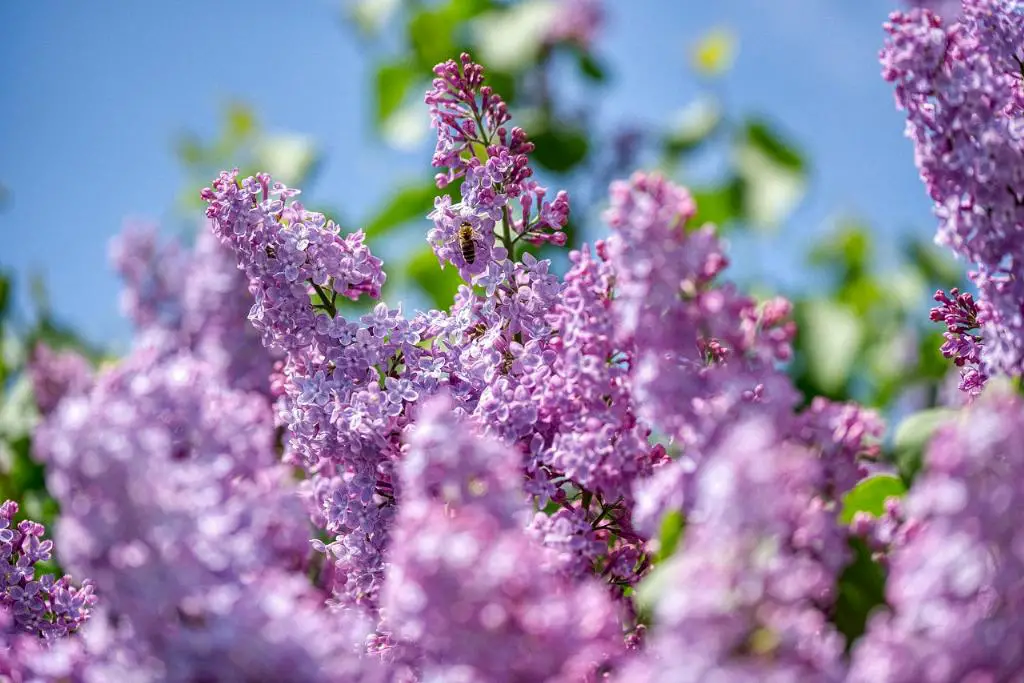Lilacs, known scientifically as Syringa, are beloved by gardeners for their fragrant and lush blossoms that usher in the warmth of spring. Originating from Eastern Europe and Asia, these hardy shrubs are part of the Oleaceae, or olive, family, which speaks volumes about their resilience and beauty. Over the centuries, the lilac has traveled and adapted, with more than 20 recognized species and countless hybrids thriving across temperate regions of the globe. Among the varieties, the common lilac, Syringa vulgaris, remains a popular choice, celebrated for its robust blooms and sweet aroma that fills the air in late spring.
Cultivating Lilacs: Best Practices for Planting and Growth
Planting lilacs is less daunting than it might seem, though they do thrive under certain conditions. A young lilac bush prefers well-drained, fertile soil, complemented by ample sunlight—ideally, more than six hours a day. When planting, spacing is crucial; these bushes can spread up to 10 feet wide, so providing room to grow is key. Spring is the best time to plant to ensure that the roots establish themselves before the winter months. Consistent care in the early years shapes a robust, floriferous bush, paving the way for years of delightful blooms.
Seasonal Care Guide for Lilac Plants: Pruning and Maintenance
Maintaining lilac plants involves attentive pruning, which ensures health and abundant flowering. The ideal time to prune is just after the blooms have faded in early summer. This timing allows the plant to set buds for the next year without risking the loss of next season’s flowers. Removing spent blooms, along with any dead or crossing branches, encourages better air circulation and light exposure throughout the bush, crucial factors in preventing disease and promoting vigorous growth.
The Ideal Conditions: Soil Types and Sunlight Preferences for Lilacs
Lilacs aren’t too fussy about soil type, but they do have a preference for neutral to slightly alkaline soil. It’s beneficial to incorporate some lime if your soil is overly acidic. This adjustment helps lilacs absorb nutrients more efficiently, particularly iron, preventing chlorosis. A position in full sun is non-negotiable for healthy lilacs. These plants are sun worshippers and need a full day’s light to bloom generously. However, in regions with particularly hot summers, a bit of afternoon shade won’t hurt.
Common Pests and Diseases Affecting Lilacs: Prevention and Treatment
While generally robust, lilacs are susceptible to a few pests and diseases. Powdery mildew is a common fungal issue, presenting as a dusty white coating on leaves. Ensuring good air circulation can prevent its onset. Lilac borers—moths that lay eggs on the bark, whose larvae burrow into branches—can cause significant damage. Keeping plants healthy and monitoring for early signs of distress can keep these pests at bay. Insecticidal soaps and neem oil are effective organic options for treating infestations.
The Fragrance and Blooms: Understanding Lilac Varieties and Their Colors
Lilacs are primarily cherished for their blooms and divine scent. The range of colors among varieties is astounding—from classic lilac to deep purple, from snowy white to rich magenta. Each variety not only differs in color but also in bloom time, fragrance intensity, and bush size. For instance, the ‘Sensation’ variety offers bicolor blooms of purple with white edges, making it a garden standout. Meanwhile, the intensely fragrant ‘Charles Joly’ will fill your garden with its sweet perfume throughout the spring.
Landscaping with Lilacs: Design Ideas and Complementary Plants
Landscaping with lilacs allows for creativity and splashes of color in yard designs. These shrubs work beautifully as part of a mixed border or as an informal hedge. Complementary plants that enjoy similar growing conditions, like peonies and irises, can help create a multilayered floral display. For those looking to add contrast, consider planting yellow-flowering plants, such as forsythia, which can offset the lilac’s lush purple hues magnificently.
Harvesting and Using Lilacs: From Garden to Table and Beyond
Lilac flowers aren’t just a feast for the eyes; their edible blooms can add floral notes to dishes and are particularly stunning when crystallized for desserts. Beyond culinary uses, they’re popularly harvested for bouquets and arrangements. Cutting lilacs for indoor enjoyment not only brightens a room but can also encourage more vigorous growth and branching in the bush.

Preserving Lilac Blooms: Tips for Drying and Crafting
If you’re looking to hold onto that spring feeling a little longer, drying lilac blooms is a wonderful way to preserve their beauty. The key to drying lilacs is to cut them when they are partially opened and hang them upside down in a warm, dry space. They retain much of their original color and can be used in dried floral arrangements or potpourri, keeping the essence of spring alive throughout the year.
